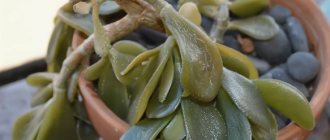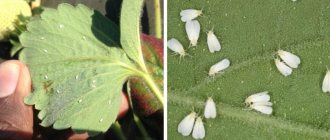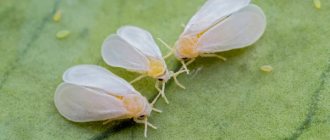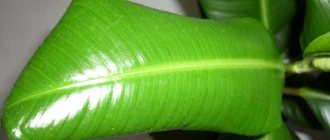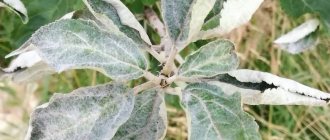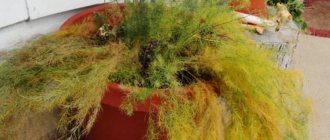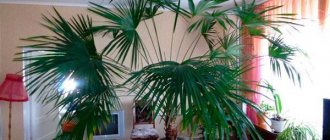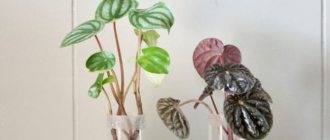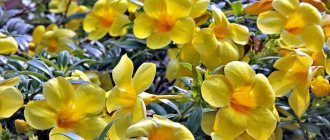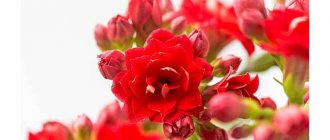Improper care
First of all, you should consider the negative factors that relate to errors in plant maintenance. It is they that in most cases lead to a deterioration in the appearance of the fat plant, falling or blackening of foliage, disproportionate growth, etc.
Yellowing and falling leaves
Very often, owners of fat cats face this problem. In this case, to eliminate the problem, it is important to adhere to the following watering rules:
- Moisten the soil only with warm water, previously filtered or settled. When watering with cold water, the difference in air and soil temperatures can adversely affect the condition of the plant.
- Avoid excessive waterlogging of the soil during the cold season. This situation leads to rotting of the roots, as well as the formation of fungus.
- Dying of leaves can be caused by drying out of the soil in summer. If its top layer becomes too hard, you should immediately water the flower.
Stretching the stem
Disproportional development of the bush often occurs due to insufficient lighting. If watering standards are observed, but there is a lack of sunlight, the fat plant stretches the stems, trying to get to the sun. As a result, there is insufficient development of leaves and branches, despite their large growth.
If the money tree is sick for this reason, just put it closer to the window. However, it is important to avoid excessive exposure to sunlight to prevent burns.
In some cases, the stems become elongated due to the normal development of the crassula. To prevent them from falling on their side, you should transplant the flower into a wide pot. Its root system grows in a horizontal plane, so transplanting it into a deeper container will not give the expected results.
soft leaves
If the foliage of the money tree has lost its elasticity and softened, then this could be caused by excessive watering, lack of lighting or inappropriate room temperature. The process of restoring the flower should be started immediately, otherwise it will soon die completely.
The plant is removed from the pot along with a lump of earth, then the soil is removed. The root system is being inspected.
Note!
If rotting or moldy areas are found, they are cut off. Next, the roots are washed under a stream of water at room temperature, the sections are treated with charcoal or activated carbon tablets crushed to powder.
All that remains is to plant the fat plant in a pot using a new substrate. For the first watering, carbendazim is used. The plant is placed in a bright place, but without direct sunlight.
There is no point in saving Crassula if rotting of the roots occurs at the base, or they are soft and dark along their entire length.
Leaves turn black
If the leaves of the money tree become covered with black spots, this is an indication of sunburn. The unhealthy area appears strictly at the point where the light ray hits and does not spread further. The blackened leaf can be removed, and care must also be taken to prevent direct sunlight from hitting the flower in the future.
However, there is another reason for the formation of black spots on the leaves of the fat plant - fungal infection. The fight against this disease consists of using the drug Fitosporin-M. It is diluted in a twice as large volume of water, after which it is thoroughly stirred and diluted again with water (the procedure will be described in more detail in the instructions for the drug). The foliage is sprayed with the resulting solution, and after a while the operation is repeated.
Lack of growth, drying out
Crassula will stop growing if its roots become crowded in the pot. You should choose a container that is slightly larger in volume. The new pot should be wider and only slightly higher, since the roots prefer to grow horizontally. It is better to transplant a flower in the spring, but if it is infected with fungus or other diseases, the procedure cannot be postponed.
A slowdown in development can also occur during winter dormancy. This is a normal phenomenon and does not require any measures to be taken.
Another reason could be a lack of nutrients in the soil or poor lighting. It is necessary to purchase complex fertilizers in a specialized store and use them in accordance with the instructions.
Important!
Drying foliage indicates an incorrect watering regime. Excessive or insufficient amounts of moisture may be added to the root. In summer, watering is carried out more often, after the top layer of soil dries, in winter - less often.
White dots on leaves
The money tree can be overly saturated with moisture received not only from the ground, but also from the air. As a result, the plant has to open spores on the leaf blades to get rid of excess water.
The appearance of white spots does not promise any particular danger, however, you should pay attention to the frequency of watering and, if possible, reduce the humidity in the room (for example, increase the temperature with a heater if we are talking about the winter period).
Reddening of foliage
A change in leaf color from green to pale or even bright red can occur for three reasons:
- prolonged exposure to direct sun;
- lack of sufficient fresh air flow;
- lack of nutrients in the soil.
Treatment will be appropriate:
- Provide the plant with shade.
- Ventilate the room regularly.
- Fertilize with nutrients. The need for this action is also indicated by wilting leaves.
Quarantine for new plants
Crassulas purchased from amateurs or in retail chains must first be placed separately from the main collection for 2 weeks in the following place:
- cool;
- shaded (but not dark);
- well ventilated.
Owners should monitor new plants for early signs of disease or pest infestation. Before selling, they are often washed off to get rid of external signs, but the problem remains.
Before sending it to a permanent place, the fat woman needs to be cured.
Diseases
All Crassula diseases are a consequence of fungal or bacterial infection. Favorable conditions for their spread are dampness and cold air. Let's take a closer look at money tree diseases and their treatment with photo examples depending on the type of lesion.
Fungal diseases
Most often, infection by fungal spores occurs during cold weather, when there is increased air humidity in a poorly heated room. Wet or gray rot appears as brown spots, gradually increasing in diameter and covering the entire leaf.
The plant will need to be transplanted into fresh substrate. If the damage is abundant, healthy cuttings are rooted and the mother flower is eliminated.
To eliminate fungal spores, it is recommended to reduce the amount of watering and ventilate the room well. All affected parts of the plant are removed, and the cut areas are disinfected with activated carbon or a weak solution of potassium permanganate.
A silvery coating on the leaves of Crassula occurs after infection by fungi, namely powdery mildew. The appearance conditions are similar to those indicated above. As countermeasures, the affected areas are removed, the top layer of soil in the pot is removed and replaced with a new one. Treatment with special preparations will give faster results. They are applied liberally from a spray bottle or poured into a basin, into which the entire plant, previously freed from the earthen clod, is dipped. It would be a good idea to disinfect the pot – the inner and outer walls.
Bacterial diseases
This type of Crassula disease is almost impossible to distinguish from a fungal infection. Treatment is carried out using fungicides. The next step is to spray the bush with antibiotics with products that include penicillin or gentamicin. It is impossible to overdo the dosage, since the substances do not have a toxic effect on the plant.
If after some time there is no improvement, the fat plant must be eliminated. It is no longer possible to save the flower; instead, there is a risk of infecting other house plants.
Useful tips
In order for the money tree to live the years allotted to it and all this time to please the eye with its fluffy crown, you should remember some points:
- Constantly check the soil moisture. Do not water the plant if the soil is less than half dry.
- Before planting the fat plant for the first time, heat-treat the soil; this will destroy harmful fungi, microorganisms and parasite larvae.
- Whenever you prune, treat the cut with activated carbon for medicinal purposes.
- Regularly ventilate the room where the fat plant is located to reduce air humidity.
- Periodically inspect the plant for damage. This will help to timely notice pests and diagnose the disease.
- To prevent root rot, add a piece of charcoal when replanting into the soil.
Pests
In addition to Crassula diseases, pests also have a negative impact, photos of which will be presented below. These include spider mites, scale insects, mealybugs and rootbugs. The method of combating each type of insect is different and therefore requires separate consideration.
Shchitovka
This pest is quite large in size, so it is clearly visible to the naked eye. Females remain motionless, they are attached to a stem or leaf, covering their body with some kind of shield. The scale insect has a light brown or brown color.
The first step in the fight against the pest is its manual removal from the surface of the fat plant. Next, treatment is carried out with a soap solution or a commercial preparation called Fitoverm. To consolidate the result, spraying is repeated after a few weeks.
Spider mite
Unlike scale insects, Crassula is practically invisible on the surface. The appearance of a tick is determined only by the corresponding sign - a silvery coating on the money tree, which is actually a very thin cobweb covering its habitat. The pest itself looks like a gray or red dot continuously moving around the plant.
Along with the cobweb, a change in the appearance of the leaf plate occurs. It becomes covered with brown spots, turns yellow and falls off over time. A simple method of eliminating the mite is to spray the crassula and then wrap the pot in a plastic bag. This will sharply raise the humidity level, and in such conditions the pest does not live long.
Soap solution or preparations Apollo, Actellik, Fitoverm are also effective in removing insects.
Mealybug
The insect quite often attacks Crassula. Its habitat is the axils of the leaves, in which the juice is sucked and plant tissue is eaten. As a result, the immunity of the fat plant weakens, accompanied by the fall of leaves. Externally, the pest’s activity manifests itself as a powdery discharge resembling cotton wool.
You can remove the insect with a stream of water. The affected areas are wiped with a cotton swab dipped in garlic infusion or alcohol solution. In advanced cases, the drugs mentioned above are used.
Root mealybug
Some manifestations of money tree diseases are caused by root worms, which are very difficult to detect. It will be possible to identify the cause of the deterioration of the flower only during the process of replanting - growths and movement of insects with a white body will be noticeable on the roots.
The pest is removed under running water at a temperature of 50 degrees. After this, the roots are treated twice in a Fufanon or Actellik solution with an interval of 7 days.
Features of the species or variety
Many types of Crassula, including the Ovata variety, which is common in indoor floriculture, in nature have a red, brick or burgundy rim along the edge of the leaf. This is the norm for them. As soon as the maintenance conditions approach natural ones, that is, the plants receive a lot of sun, the internodes become short, and the leaves around the perimeter turn red.
Crassula ovata has very spectacular varieties:
- Minor - a compact, common form; when kept in full sun, the edges of the plates become purple;
- The Hobbit and Gollum – the top of the “tubes” turns red;
- Sunset appears orange from a distance, although in fact it is a mixture of scarlet and yellow on a light green background;
- The tricolor is distinguished by a bright, wide, red-pink rim that gradually fades towards the center of the plate.
In the Tree Crassula, with which fans persistently confuse Ovata, reddened leaves are a rarity. They usually signal problems.
Other types:
- Crassula atropurpurea is characterized by purple coloring of vegetative organs; varieties may have a green color, but always have a bright edging;
- the leaves of many picturesque spicate or creeping crassulas turn red, pink, brown, or purple;
- in Crassula cooperi the plates are covered with ink spots.
Only in bright sunshine do the leaves of the fat plant turn red - on the balcony, street, southern windowsill. In diffuse lighting, the variegated species will fade, and the green ones will lose their border. In the depths of the apartment without artificial lighting, they will take on a dirty or gray tint.
How can you tell if the trunk of a money tree has rotted?
It's simple: the fat plant's foliage begins to thin. It’s not just one leaf turning yellow, but you can observe real leaf fall. When you feel the trunk, you will feel unusual softness and stickiness at the base.
Main features:
- curvature of the trunk - it seems empty inside;
- the presence of traces of gray or black rot in the roots;
- cessation of growth and loss of crown;
- inside the trunk there is blackness and emptiness.
Next, carefully dig up the tree and examine its roots. Sliminess, peeling of outer layers, terrible appearance and smell will tell about rotting. If the soil is constantly wet, this is a reason to be wary.
Other reasons:
- Sometimes the trunk of the Crassula shrivels and dries out. This is not a sign of flooding, but of overdrying. In this case there is no rotting, but the plant suffers seriously. Typically, deformation occurs at the top of the crown.
- If the trunk rots at the base and the crown is heavy, the tree may simply fall on one side or break. It is important to identify problems in time and prevent plant damage.
- When the roots rot due to gray rot, the base becomes so soft that it does not support the crown, and the tree falls.
Thrips
Thrips are microscopic insects that feed primarily on the sap of leaves. Outwardly, they look like black flies, moving intensively if disturbed. The plant is affected not only by the thrips themselves, but also by their larvae.
A sign of the presence of a parasite on the Crassula is the formation of a patterned mark on the leaves and sticky imprints on the trunks and shoots. The affected areas subsequently die.
Mold can adhere to thrips if the plant is exposed to fresh air. An aerosol insecticide or one of the following medications will help get rid of the pest:
- Mospilan. Dilute 1 g of the product in 2 liters of water and spray the plant twice with an interval of 14 days.
- Vertimek. Mix 5 ml of the drug with 10 liters of water. Treat the fat plant 2 times with an interval of 14 days.
- Spark. Dissolve 1 tablet in 0.5 liters of water, mix well. Bring the solution to 10 l. Carry out thrips removal work 2 times with an interval of 20 days.
- Agrometrin. Take 5 ml of the drug and mix with 2 liters of water. Spray the plant at a temperature of +18 degrees. After processing, place the fatty mushroom in a bag. This is necessary to enhance the effect.
Traditional methods of fighting thrips:
- Garlic. Fill 5 cloves with vegetable oil. Leave the mixture to steep for 3 days. Dilute the resulting oil extract in 1 liter of water and spray the Crassula leaves.
- Dandelion. Infuse 100 g of wildflower roots and leaves in 1 liter of water for 5 hours. Carry out the disinfection procedure 2 times with an interval of 3 days.
What does a healthy Crassula leaf look like?
The plant belongs to the succulent family and is characterized by a powerful thick stem on which there are fleshy dark green leaves. The main feature is that the leaves are able to accumulate moisture, since in nature this crop grows in harsh conditions.
Thick, fleshy and elastic leaves with smooth, dense green skin are an indicator of good health and condition of the Crassula. By their appearance, you can accurately determine that the tree is sick.
Crassula leaves contain small amounts of arsenic. Pets should not be allowed to chew them, as this could result in serious poisoning.
Prevention measures
Creating optimal conditions will help avoid reddening of the leaf plate. To do this, just follow a few simple preventive measures:
- optimize watering, that is, moisten only after checking the condition of the soil;
- during replanting, clean the roots from the soil as carefully as possible so as not to damage them;
- If, when transferring to a new pot, you find rotten areas on the root system, be sure to cut them off and treat the cut area with activated carbon powder;
- Fertilize only with properly selected preparations intended for succulents and cacti;
- Place a drainage layer on the bottom of the pot;
- Spray the foliage extremely rarely and only with pre-settled water;
- In the summer, take the plant outside.
